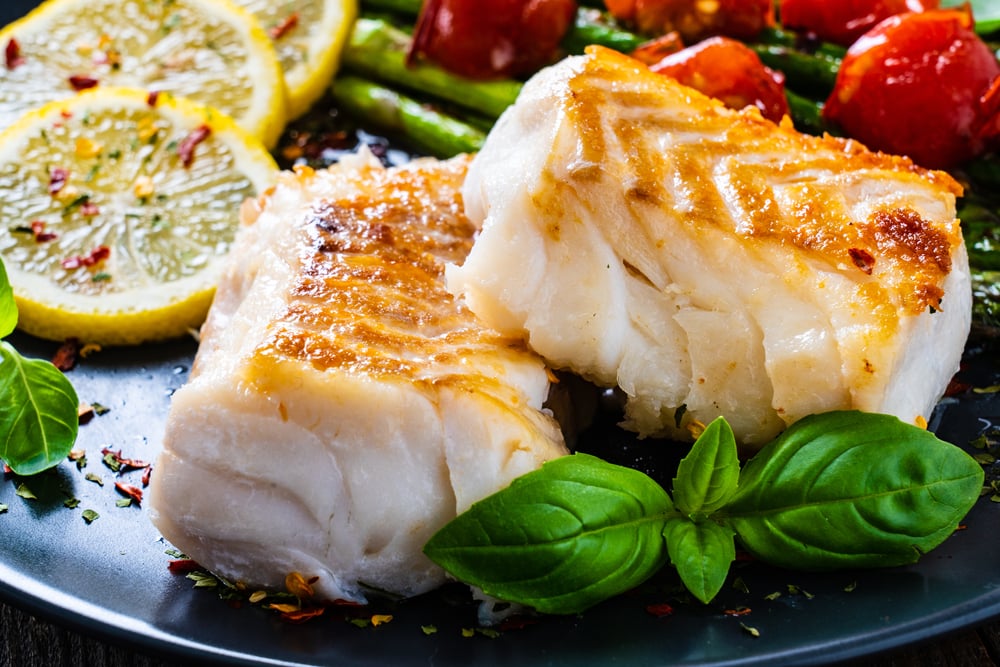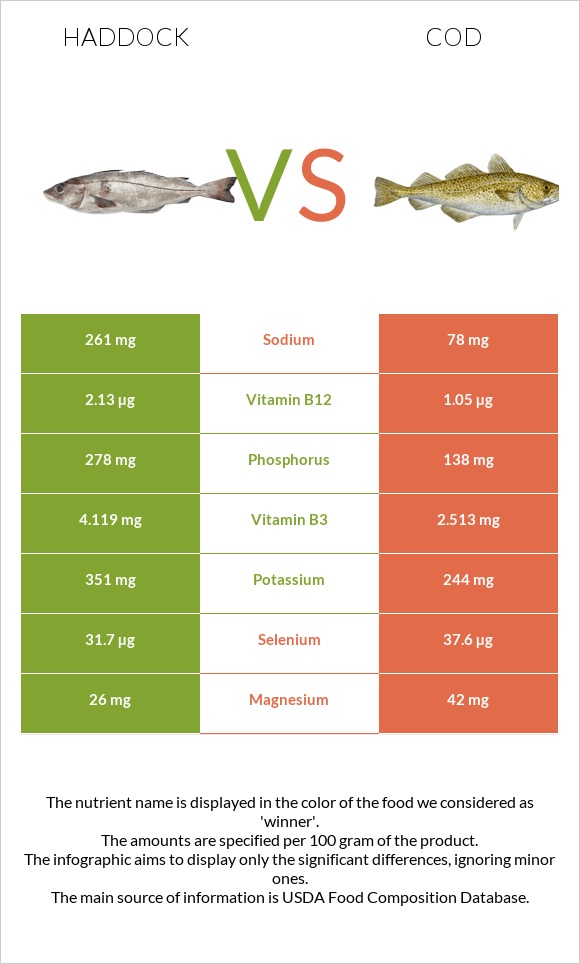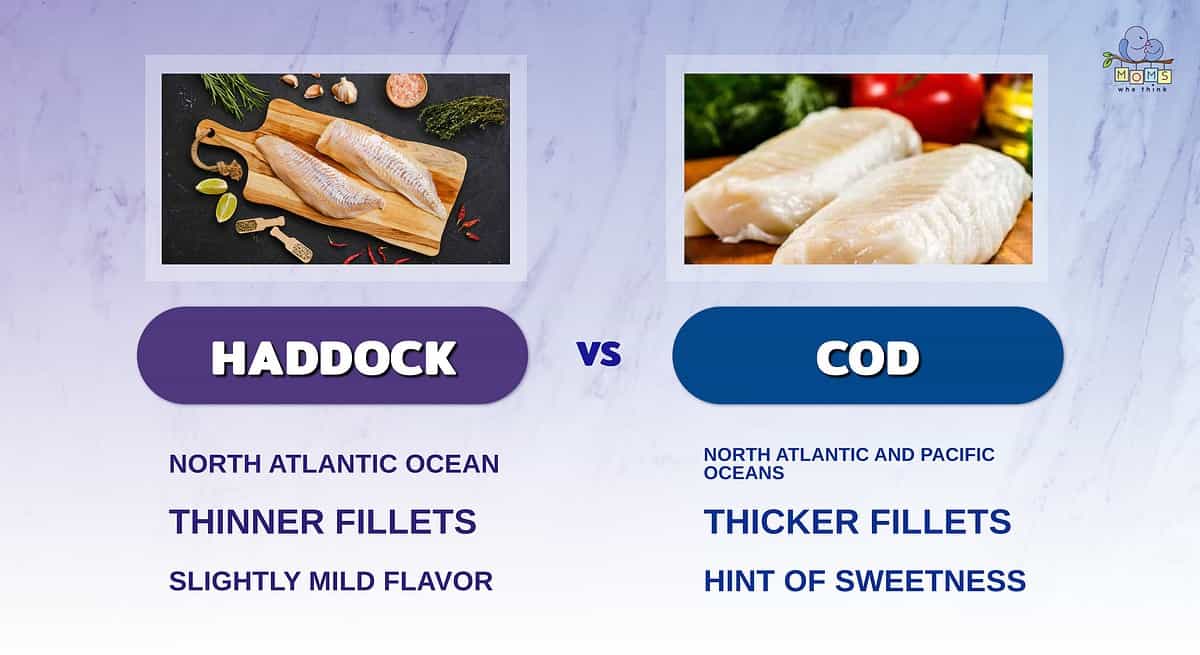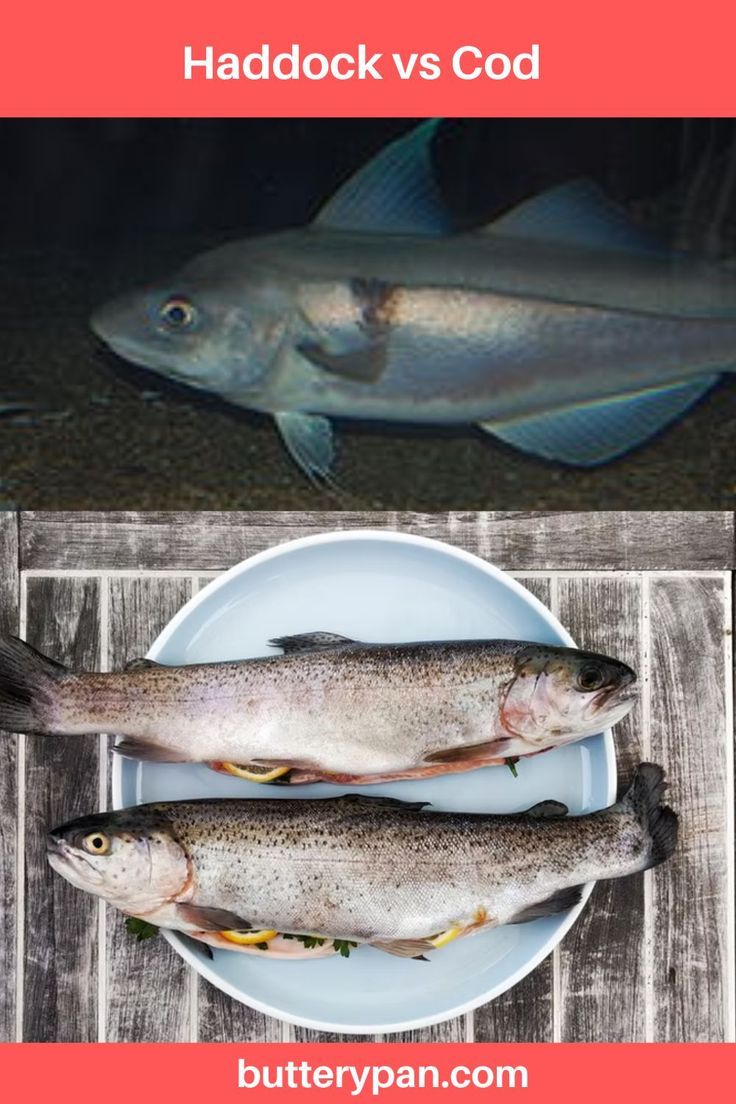Introduction

White fish is a popular choice when it comes to seafood, and two varieties that often come up in the culinary world are cod and haddock. While both are white fish, they have distinct characteristics that set them apart. In this article, we will explore the physical characteristics, culinary uses, nutritional value, flavor, and texture differences between cod and haddock. By understanding these differences, you can make informed choices about the type of white fish that suits your taste preferences, culinary needs, and sustainability concerns. So, let’s dive into the comparison between cod and haddock to discover their unique qualities.
Overview Of White Fish Varieties: Cod And Haddock
White fish varieties like cod and haddock are popular choices in the culinary world. Both cod and haddock belong to the same family and have similar physical characteristics. Cod is known for its firm, dense, and flaky white flesh with a mild flavor, while haddock has a slightly fishier taste, with tender and flaky meat that is also lightly sweet. In terms of sustainability, haddock is often considered a more sustainable choice compared to cod. Understanding the differences between cod and haddock allows for informed choices when it comes to cooking and sustainability concerns.
Physical Characteristics
Physical Characteristics:
Cod and haddock possess distinct physical features that allow for easy differentiation. Cod has a white or cream-colored lateral line, while haddock has a dark grey or black line. In terms of body color, cod has speckled grey-brown skin, while haddock has dark grey or black skin. Another noticeable difference is in the front dorsal fins, where haddock has a long pointed fin compared to cod. These physical characteristics make it easier to identify and distinguish between the two white fish varieties.
Distinct Physical Features Of Cod

Cod possesses several distinct physical features that set it apart from haddock. One noticeable characteristic is the white or cream-colored lateral line that runs down its sides. In terms of body color, cod has speckled grey-brown skin, which gives it a unique appearance. Additionally, cod has a slightly thicker and smoother texture compared to haddock. Another differentiating feature is the front dorsal fin of cod, which is shorter and more rounded compared to haddock. These physical attributes make cod easily distinguishable from its close relative, the haddock.
Distinct Physical Features Of Haddock
Haddock, like cod, possesses distinct physical features that differentiate it from other fish. One notable characteristic is the dark grey or black lateral line that runs along its sides, contrasting with the white or cream line found on cod. Haddock also has dark grey or black skin, particularly on its upper half, giving it a unique appearance. Another distinguishing feature of haddock is its long pointed front dorsal fin, which sets it apart from other fish species. These physical attributes make haddock easily recognizable and distinguish it from its counterpart, the cod.
Culinary Uses
Culinary Uses: Both cod and haddock are versatile fish that can be prepared in a variety of ways. Cod is often used in dishes such as fish and chips, fish tacos, and baked fish. Its mild flavor and firm texture make it a popular choice for frying or grilling. Haddock, on the other hand, is commonly used in dishes like fish chowder, fish cakes, and fish pies. Its stronger fish flavor adds depth to these recipes. Both fish can also be baked, broiled, or steamed, allowing for a range of culinary possibilities.
Best Cooking Methods For Cod

Cod is a versatile fish that can be cooked in various ways, allowing its mild flavor and firm texture to shine. Here are some of the best cooking methods for cod:
- Frying: Cod is often used to make classic fish and chips. Coat the fillets in a batter or breadcrumbs and deep-fry them until golden and crispy.
- Grilling: Grilled cod is delicious, especially when marinated with herbs and spices. It can be cooked directly on the grill or wrapped in foil for a more delicate flavor.
- Baking: Baking cod is a healthy and easy option. Place fillets in a baking dish, season with herbs and lemon, and cook until flaky and tender.
- Steaming: Steaming cod retains its moisture and delicate flavor. Steam it over gentle heat with aromatics or in a flavorful broth.
These cooking methods highlight the delicate flavor and firm texture of cod, making it a favorite for seafood lovers.
Best Cooking Methods For Haddock
Haddock is a versatile fish that can be prepared using various cooking methods to enhance its delicate flavor and flaky texture. Some of the best cooking methods for haddock include:
- Baking: Place haddock fillets in a baking dish, season with herbs and spices, and bake until the fish is opaque and flakes easily with a fork.
- Pan-frying: Coat the haddock fillets in flour or breadcrumbs and pan-fry them until they are golden and crispy.
- Grilling: Grilled haddock is delicious when marinated with lemon juice, garlic, and herbs. Cook it directly on the grill or wrap it in foil for a more delicate flavor.
- Poaching: Poaching haddock in seasoned broth or white wine helps retain moisture and produces a tender and flavorful result.
These cooking methods bring out the best in haddock, ensuring a delicious and satisfying meal.
Nutritional Value
Both cod and haddock are nutritious seafood options that offer several health benefits. Both fish varieties provide equal amounts of essential nutrients, such as vitamin B2 and vitamin K. They are also rich in omega-3 polyunsaturated fatty acids, which are good for heart health. Cod and haddock are excellent sources of low-fat protein, making them a healthier alternative to red meat. A 100g serving of cod contains approximately 17g of protein, while haddock contains around 20g. However, it is worth noting that both fish lack vitamin B9 (folate) in their nutritional profile.
Nutritional Profile Of Cod

Cod is a highly nutritious fish with a range of essential nutrients. It is a rich source of protein, providing approximately 17g of protein per 100g serving. Cod is also packed with omega-3 polyunsaturated fatty acids, which are beneficial for heart health. Additionally, it contains significant amounts of vitamins B2 and K. However, it should be noted that cod lacks vitamin B9 (folate) in its nutritional profile. With its low-fat content and high protein and omega-3 levels, cod is a healthy choice for those looking to maintain a well-balanced diet.
Nutritional Profile Of Haddock
Haddock is a nutritious white fish variety that offers a range of essential nutrients. It is a good source of protein, providing approximately 20g of protein per 100g serving. Haddock also contains significant amounts of vitamins B2 and K, as well as omega-3 polyunsaturated fatty acids. Similar to cod, haddock is low in fat and can be a healthy alternative to red meat. However, like cod, haddock lacks vitamin B9 (folate) in its nutritional profile. Incorporating haddock into a balanced diet can help promote overall health and well-being.
Flavor And Texture
When it comes to flavor and texture, there are some notable differences between cod and haddock. Cod has a mild, clean taste with a firm and dense texture. Its flesh is flaky and holds together well, making it ideal for grilling or searing. On the other hand, haddock has a more pronounced and flavorful taste, with a slightly fishy undertone. It has a softer texture and its flesh is also flaky, but slightly more delicate compared to cod. Both fish offer a delightful eating experience, but the contrasting flavors and textures add uniqueness to each variety.
Taste Profile And Texture Of Cod

Cod is known for its mild, clean taste and firm, dense texture. It has a subtle brininess that adds a pleasant flavor to dishes. The flesh of cod is flaky and holds together well, making it a versatile option for grilling, searing, or baking. The texture of cod fillets is thick and firm, allowing them to withstand high heat without overcooking easily. This makes them ideal for various cooking methods and ensures that the fish remains moist and tender. Cod’s delicate yet flavorful taste and firm texture make it a popular choice for both simple and elaborate seafood preparations.
Taste Profile And Texture Of Haddock
Haddock has a distinct taste profile and texture that sets it apart from cod. Its flavor is more pronounced and fishy compared to the mild taste of cod. Haddock has a delicate sweetness with a hint of brininess, which adds depth to its overall flavor. The flesh of haddock is also firm and tender, similar to cod, but with a slightly flakier texture. This makes haddock a great choice for various cooking methods, including frying, baking, or grilling. Its flavorful taste and flaky texture make it an excellent option for fish dishes that require a bolder flavor.
Conclusion
In conclusion, while both cod and haddock are popular white fish varieties, they have distinct differences in taste, texture, and culinary uses. Cod has a milder flavor, firmer texture, and is often used in dishes such as fish and chips or baked dishes. On the other hand, haddock has a stronger, more pronounced flavor with a delicate sweetness and slightly flakier texture, making it a great choice for frying, baking, or grilling. Understanding these variations allows individuals to choose the fish that best meets their preferences and dietary needs.
Key Differences Between Cod And Haddock

Cod and haddock, while both being white fish varieties, have several key differences. One major difference lies in their flavor profiles. Cod has a milder, cleaner taste compared to haddock, which has a more pronounced and fishier flavor. Texture-wise, cod has a firmer, denser, and flakier flesh, while haddock tends to be slightly flakier and more delicate. Their culinary uses also differ, with cod being commonly used in fish and chips or baked dishes, while haddock is great for frying, baking, or grilling. Ultimately, these differences make each fish unique and suited for different culinary preferences.
Popular Dishes Using Cod And Haddock
Popular dishes using cod include fish and chips, where cod is deep-fried in a crispy batter and served with fries. Baked cod is also a popular option, where the fish is seasoned and cooked in the oven until tender and flaky. Cod can also be used in stews and chowders, adding a delicate flavor to the dish.
Haddock is commonly used in dishes like fish chowder, where its slightly stronger flavor adds depth to the soup. It is also frequently used in fish cakes and baked dishes. Haddock can be grilled, fried, or baked, making it versatile for a variety of recipes.
FAQ About Difference Between Cod And Haddock: Contrasting White Fish Varieties
Q: What is the main difference between cod and haddock?
A: The main difference between cod and haddock lies in their flavor. Cod tends to have a milder and sweet flavor compared to haddock, which has a more pronounced and slightly sweeter taste.
Q: Are there any differences in texture between cod and haddock?
A: Yes, there are differences in texture between cod and haddock. Cod has a firmer and larger flake compared to haddock, which has a finer and softer texture.
Q: How do cod and haddock differ in color?
A: Cod typically has a whiter flesh color compared to haddock, which tends to have a slightly off-white or creamy hue.
Q: Can cod and haddock be used interchangeably in recipes?
A: While cod and haddock are both white fish with similar cooking properties, their flavor profiles are distinct. It is recommended to use them according to the specific recipe requirements to ensure the desired taste outcome.
Q: Are there any nutritional differences between cod and haddock?
A: Cod and haddock are both excellent sources of lean protein and nutrients. However, their specific nutritional content may vary slightly. Cod is known to be slightly lower in calories and fat compared to haddock.
Q: Which is more commonly available in the market: cod or haddock?
A: Cod is generally more widely available and popular in the market compared to haddock, which may be more regionally specific in availability.
Q: How should one choose between cod and haddock when purchasing?
A: When choosing between cod and haddock, consider your personal preference for flavor and texture. Both are versatile for cooking, so choose based on the desired taste and texture for your dish.

Welcome to Braddock Bay Tavern & Grill, where history, delicious cuisine, and stunning views come together to create an unforgettable experience. Our restaurant, situated on the picturesque edge of Lake Ontario, has a rich history that adds a unique charm to your dining experience. The roots of our establishment can be traced back to 1865, when it was first constructed as an icehouse. Over the years, it transformed into the historic Braddock Bay Hotel, becoming a beloved local landmark. Today, we take pride in preserving the building’s historical beauty, ensuring that every visit to our restaurant is a journey through time.